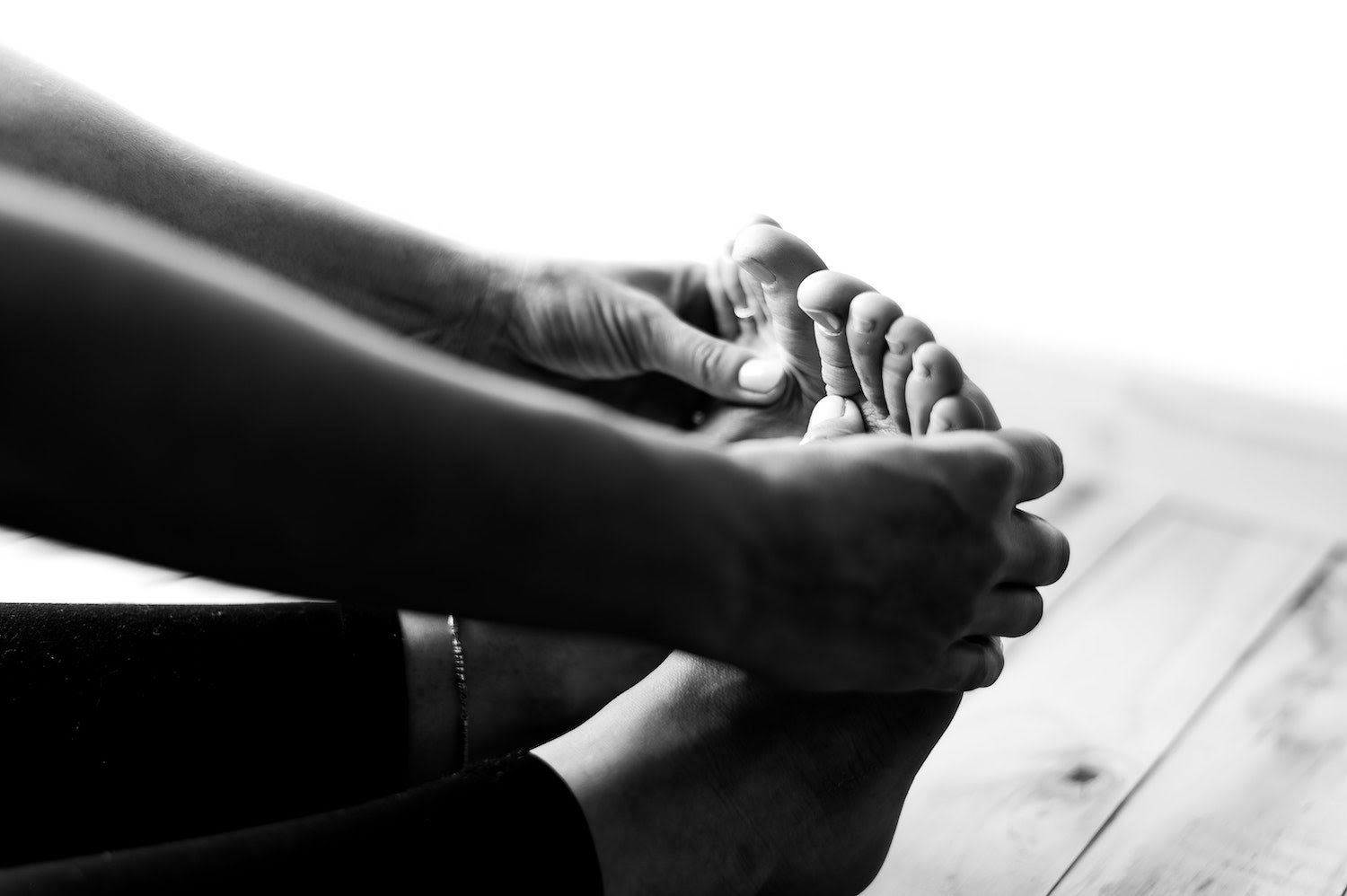
Plantar fasciitis is a common foot ailment—in fact, it’s estimated that 1 in 10 people will suffer from plantar fasciitis at some point in their lives.¹ Luckily, plantar fasciitis prevention can be achieved with just a little medical information and some minor changes to your routines like getting a pair of shoes for plantar fasciitis.
Plantar fasciitis is a condition that you can experience any number of times. You may have a minor case of it once, then have a flare-up several months later. This quick guide will explain what causes plantar fasciitis and how you can prevent it.
Leading Causes of Plantar Fasciitis
To understand how to prevent plantar fasciitis, you must first understand what causes it. Plantar fasciitis pain can be caused by a host of different activities, and some people are naturally more at risk of developing plantar fasciitis than others.
Some of the most common causes of plantar fasciitis include:
- Running – Runners, especially long-distance runners, often develop plantar fasciitis because of the excess shock and strain on their heels. Running on hard surfaces like city streets or paved tracks can greatly increase the risk of plantar fasciitis.
- Working on your feet – Jobs that keep you on your feet for many hours at a time can put you in danger of developing plantar fasciitis. Restaurant servers, factory workers, teachers, and other people who spend most of their working hours walking or standing may be putting excessive stress on their plantar fascia, and thus experience signs of plantar fasciitis.
- Athletics and dance – Unsurprisingly, sports that involve a lot of running and jumping on hard surfaces (basketball, tennis, volleyball, etc.) are another common cause of plantar fasciitis foot pain. Certain kinds of dance, such as ballet, tap, or aerobic dance, can cause inflammation as well.
People who suffer from plantar fasciitis will often ask can a chiropractor help with plantar fasciitis? The answer is yes! Chiropractors are trained to help calm the symptoms of plantar fasciitis and can recommend other tools for you to practice on a daily basis. You can ask your chiropractor for tips and they might recommend compression for plantar fasciitis.

How to Prevent Plantar Fasciitis
Now that you know all the important details about the causes, risks, and symptoms of plantar fasciitis, it’s time to go over the very best methods for plantar fasciitis prevention. Hopefully, after incorporating all of these tips into your daily life, you will start to experience signs of plantar fasciitis healing while reducing your chances of developing even more plantar fascia tears.
#1 Don’t Go Barefoot
Running or walking with bare feet is a surefire way to put undue stress on your plantar fascia. As you know, these activities already come with a risk of plantar fasciitis, without the added risk of extra shock on your tissues from bare feet. Going around with no shoes gives you a total lack of arch support.
Of course, going barefoot is fine in many contexts. Walking on a beach or a fluffy carpet with bare feet is not a major risk for developing plantar fasciitis. However, you should definitely avoid going barefoot on hard surfaces like roads, sidewalks, tracks, or courts.
#2 Change Up Your Exercise Routine
This tip is especially good for people who are already starting to develop plantar fasciitis, or have developed plantar fasciitis in the past and want to keep it from coming back.
It’s clear that certain exercises put you at higher risk for straining your plantar fascia. High-impact movements like running and jumping (which are essential for many sports and exercises) put a ton of stress on the tissues, ligaments, joints, muscles, and bones in your feet.
Fortunately, there are several exercises that greatly reduce the strain on your feet while still providing an intense workout.
- Cycling is a good alternative to running because it reduces the strain on your feet and knees.
- Yoga is another great way to get your heart rate up without putting a heavy load on your ligaments.
- Swimming is one of the very best exercises for people at risk of plantar fasciitis because it involves little to no strain on the feet.
#3 Lose Weight
According to data from the Centers for Disease Control and Prevention, the average American male weighs 199.8 pounds, and the average American woman weighs 170.8 pounds.² The plantar fascia of your feet is responsible for carrying around all that weight.
People who are overweight or obese may be increasing the daily burden on their plantar fascia. Therefore, people who carry around extra weight should consider making a few healthy lifestyle changes to help prevent plantar fasciitis or reduce its effects.
#4 Stretch
Daily stretching is a smart way to reduce heel pain that many people with plantar fasciitis experience. Some of the best stretches for preventing or soothing pain from plantar fasciitis include:
- Rolling the bottom of your foot over a foam roller
- Gently pulling your big toe toward you and holding for 15 to 30 seconds
- Placing a strap or folded towel under your foot and pulling the ends toward you
- Stretching each calf muscle by standing against a wall and bending one leg forward
#5 Untuck Your Bed Sheets
If you sleep on your back with sheets that are tightly tucked in, your feet will be kept in a pointed position all night while you sleep. The night-long pointing of your feet constitutes a major strain on the ligaments in your ankles, heels, and feet—especially the plantar fascia. To avoid unnecessary nighttime pressure on your feet that can cause plantar fasciitis, keep your bed sheets a bit more loose while you sleep.
#6 Choose Footwear With Proper Support
A soft shoe with little support can be all it takes to develop painful and irritating plantar fasciitis. However, with Vionic shoes, you won’t have to worry about putting excess strain on your feet. Go out confidently with the knowledge that Vionic’s supportive and durable footwear will keep you comfortable and safe from heel pain.
Vionic shoes are specifically designed to prevent plantar fasciitis pain, so you don’t have to spend money on expensive custom orthotics. We also provide wide shoes for women who suffer from plantar fasciitis. No need for shoe inserts because the Vionic shoe design includes a biomedical footbed that makes sure your feet stay in their natural alignment. Every pair of our shoes provide stability, arch support, shock absorption, and cushioning. Vionic shoes are trusted and approved by experts, including the American Podiatric Medical Association.

For Style and Plantar Fasciitis Support, Choose Vionic
Many people who want more support from their shoes worry that they’ll have to settle for bland and boring styles. With Vionic, you can rest assured that style is never sacrificed for stability. The Vionic Innovation Lab has found a way to put a premier aesthetic around scientifically researched foot support. Men and women can shop for casual sneakers, dress shoes, flip flops, and more that all have top-tier plantar fasciitis protection.
Sources:
- “Do I have plantar fasciitis?”. WebMD. https://www.webmd.com/fitness-exercise/understanding-plantar-fasciitis-symptoms
- “What can you do to keep plantar fasciitis from coming back?”. WebMD. https://www.webmd.com/fitness-exercise/qa/what-can-you-do-to-prevent-plantar-fasciitis
- “Plantar fasciitis”. Mayo Clinic. https://www.mayoclinic.org/diseases-conditions/plantar-fasciitis/symptoms-causes/syc-20354846
- “27 Fun Facts and Statistics About Plantar Fasciitis”. Heel That Pain. https://heelthatpain.com/15-plantar-fasciitis-facts/
- Christine Case-Lo. “Everything You Want to Know About Plantar Fasciitis”. Healthline. Updated on Nov 8, 2019, https://www.healthline.com/health/plantar-fasciitis#causes
- Treacy Colbert, “Plantar Fasciitis Stretches to Soothe Heel Pain”. Healthline. Updated on Sept 17, 2018, https://www.healthline.com/health/fitness-exercise/plantar-fasciitis-stretches#stretching
- “Body Measurements”. Centers for Disease Control and Prevention. https://www.cdc.gov/nchs/fastats/body-measurements.htm


Leave a Reply